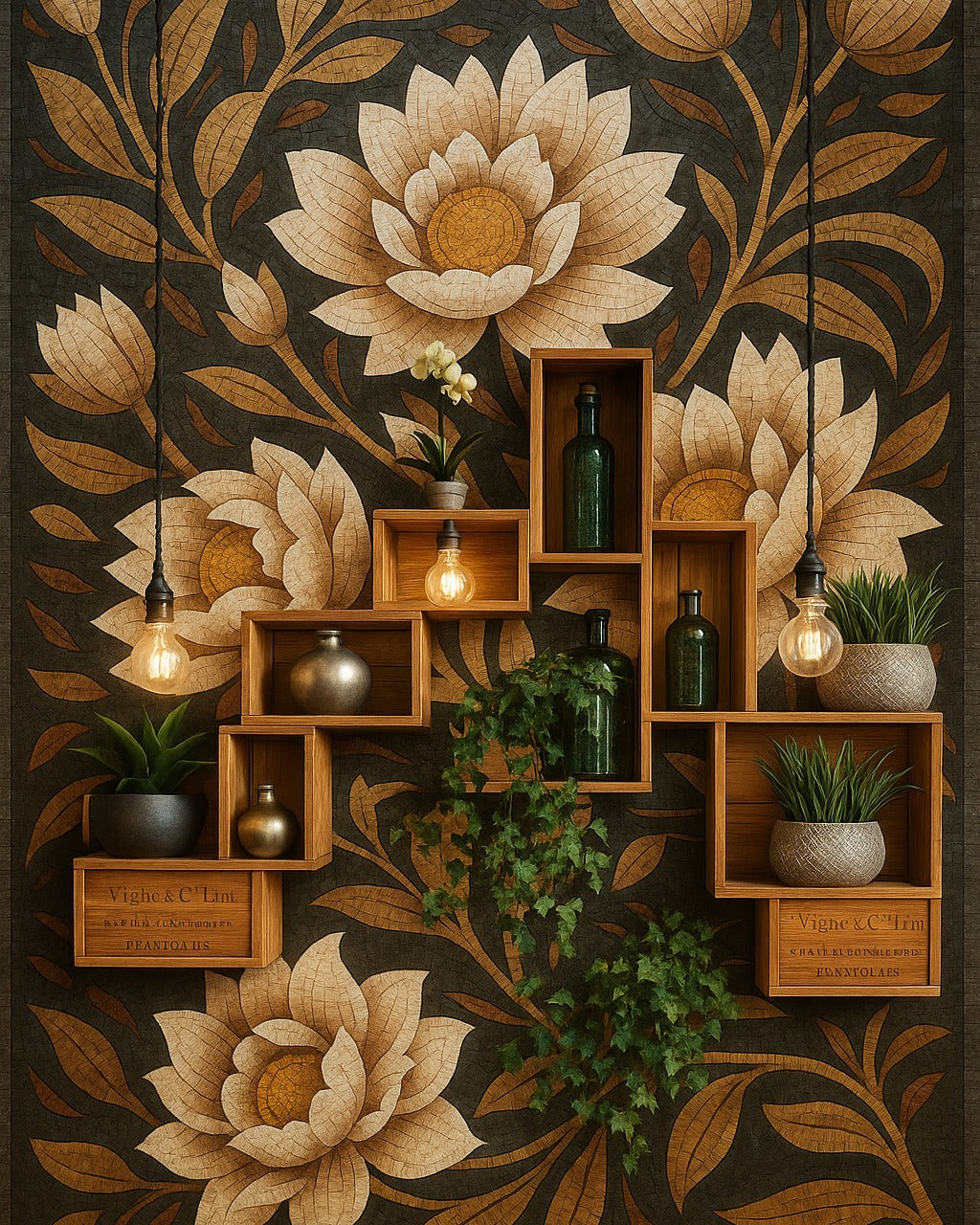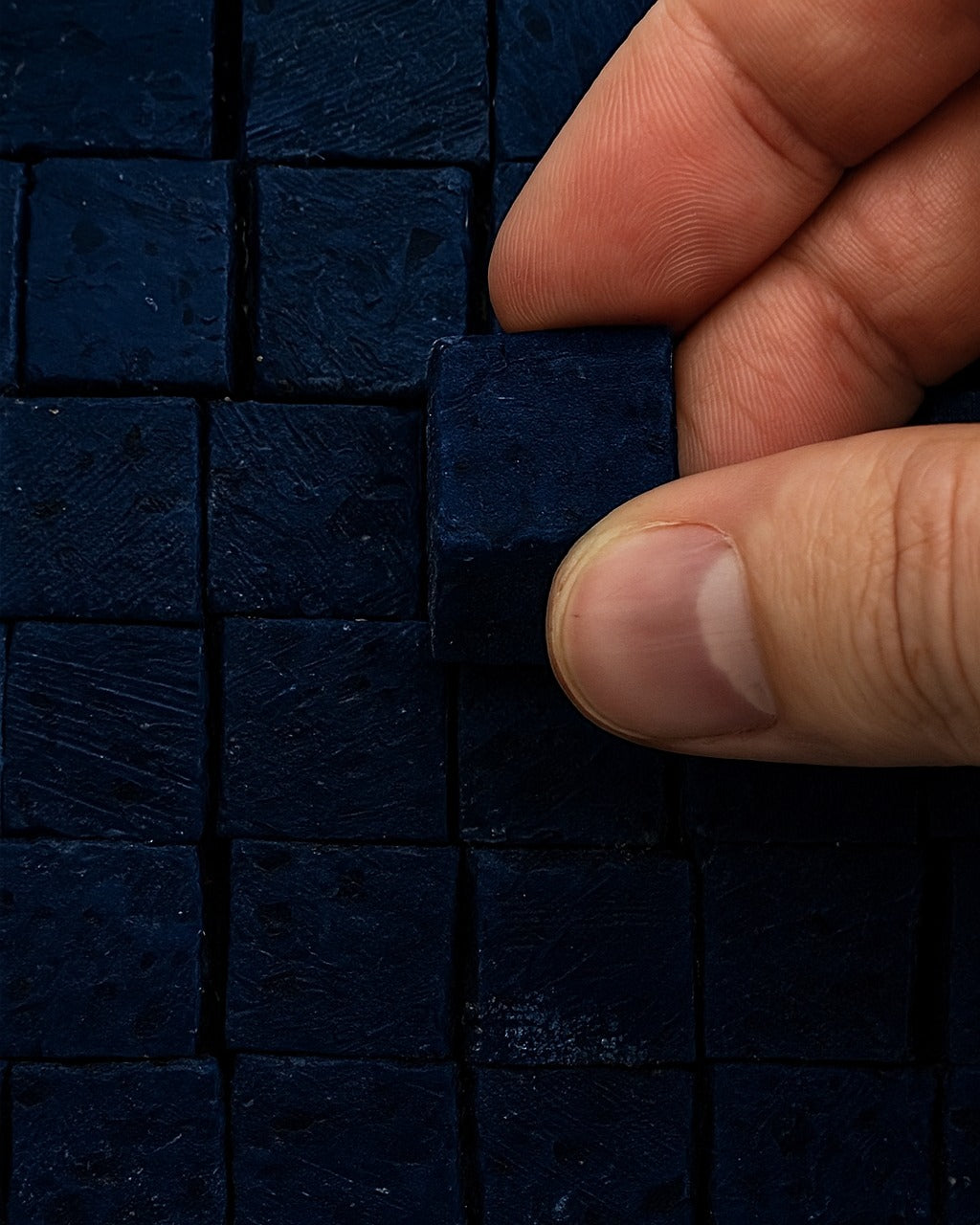The term tesserae (tessera, the Latin word for 'a small cube') refers...
Mosaic art, with its captivating blend of color and texture, has graced human civilization for millennia. From the awe-inspiring Byzantine basilicas to the playful patterns of Roman villas, mosaics have served as a powerful medium for storytelling and artistic expression. While mastering the basics of cutting tiles and adhering them to a surface is a rewarding experience, there's a whole world waiting for those who wish to delve deeper into the art of mosaic design. This article unveils two advanced mosaic techniques – opus vermiculatum (indirect mosaic) and micro mosaic – that will push your artistic boundaries and elevate your mosaic creations.

Opus Vermiculatum: The Art of the Worm
Opus vermiculatum, also known as "worm work" or "vermiculation," is an intricate mosaic technique that utilizes very small tesserae (mosaic tiles) to create detailed and realistic imagery. Unlike the more common direct mosaic method where tiles are directly adhered to the substrate, opus vermiculatum involves an additional layer of separation. Here's a breakdown of the process:

2- Setting the Bed: A bed of adhesive material, traditionally pitch or wax, is applied to a slate or ceramic backing plate.
3- Tesserae Placement: Tiny tesserae, often made from glass or stone, are meticulously placed face down into the adhesive bed, following the cartoon design. The key here is achieving a very tight fit between the tesserae, minimizing gaps.
4- Drying and Inversion: Once the tesserae are positioned, the entire bed is allowed to dry and harden. The slate or ceramic plate is then carefully inverted, separating the tesserae from the initial setting bed.
5- Direct Mosaic Application: The tesserae, now adhered together in the desired pattern, are then applied face up onto a new mortar bed using the direct mosaic method. This creates a more stable and durable mosaic artwork.

Opus vermiculatum demands meticulous attention to detail, patience, and a steady hand. The resulting artwork, however, is unparalleled in its realism and finesse. Imagine capturing the subtle gradations of a human face or the intricate details of a flower petal – opus vermiculatum allows you to achieve such artistic mastery.

Micro Mosaic: A World in Miniature
Micro mosaic, as the name suggests, is the art of creating mosaics using minuscule tesserae. These tesserae can be as small as a pinhead, crafted from glass rods or enameled tesserae specifically manufactured for micro mosaics. The process is similar to opus vermiculatum, with the key difference lying in the size and detail of the tesserae used.

Micro mosaics are renowned for their ability to depict incredibly intricate scenes and portraits with breathtaking detail. Imagine a miniature landscape scene recreated entirely from tiny tesserae, or a microscopic portrait capturing the nuances of a human expression. Micro mosaic artists are akin to miniaturists, wielding their tools to create captivating worlds in miniature.

Embarking on Your Advanced Mosaic Journey
Opus vermiculatum and micro mosaic represent the pinnacle of mosaic artistry. Mastering these techniques requires dedication, practice, and a well-equipped studio. Here are some pointers to get you started:
- Invest in Quality Tools: Fine-tipped tweezers, magnifying glasses, and specialized tools for cutting and shaping tiny tesserae become crucial for these advanced techniques.
- Seek Out Masterclasses: Workshops or online tutorials conducted by experienced opus vermiculatum or micro mosaic artists can provide invaluable guidance and hands-on experience.
- Start Small: Don't be intimidated! Begin with small-scale projects to develop your skills and confidence before tackling larger pieces.
- Practice Makes Perfect: As with any art form, consistent practice is key. Dedicate time to honing your skills in handling tiny tesserae and creating smooth transitions between colors.

Opus vermiculatum and micro mosaic open doors to a world of artistic exploration and expression in the realm of mosaic design. By venturing into these advanced techniques, you can transform your mosaics from beautiful creations to breathtaking testaments to your artistic dedication and skill. So, are you ready to delve into the depths of mosaic design?





























